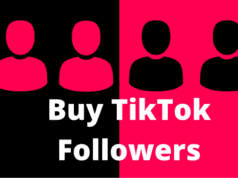
The digital population keeps growing. Over 4 billion people worldwide now have access to the internet; an overwhelming majority use their mobile phones to check social media, enjoy apps and satisfy their next entertainment demands.
It’s no surprise then that mobile ad spending was on track to reach $107 billion in 2017, a 34 percent increase from 2016. Mobile ad spending will make up three-quarters of all digital ad spend in the U.S. this year, equating to over $70 billion. As Forbes notes, just a decade ago mobile ad spend only totaled $320 million.
While the climate is certainly ripe for app developers and enthusiastic marketers to dig in and find a loyal user base, more ad spend means more competition, and the app ecosystem is already flooded with apps that mostly sit idle.
To ensure your app isn’t forgotten (or never discovered), diversify your marketing tactics with these free and paid creative strategies.
1. Playable Ads
The growing mobile landscape offers more opportunity for app marketers but exacerbates the same visibility challenge and struggle keeping post-installs engaged. One way marketers (especially gaming app marketers) can tackle this is with gamified ads. Gamified ads use unique information from in-depth user segments to create interactive ads with more personal messaging.
According to an IPG Media Lab Report, gamified ads extended the amount of time consumers spent with brands, up to 47 percent more time than non-interactive ads. For marketers that are struggling to properly showcase their app experience through other advertising means, interactive ads can serve as a sample of what a user can expect if they download your app.
2. Reach Out to Authority App Review Blogs
Any solid app marketing strategy incorporates a solid blend of effective marketing dollars with good ole-fashioned work. You can’t expect all your traffic, installs, and active users to come from ads, so you need to set the foundation for long-term organic traffic. One worthwhile strategy to accomplish this is to reach out to app review blogs.
While we might instantly think of Tom’s Guide, Mashable or TechCrunch when it comes to the main review sites, many others exist, and they all receive traffic. Step one would be to scour the web and find these sites, but at the risk of having you work too hard, MobiLoud and TimeCamp have both put together phenomenal resources listing the top app review blogs and websites as well as contact info for each.
Check these sites for reviews that are relevant to your app. Once you have your list ready, reach out to the editor complimenting them on the review while delicately mentioning your app and how it might make a nice addition. You could also ask the site to review your app on its own.
Take the time to create customized email templates and test a few different responses to see what’s working best. Your success rate won’t be off the charts, but even if you succeed with 10 sites out of 130, that’s still ten reviews you didn’t have before!
3. Dynamic Ads
An effective complement to all types of mobile advertising, dynamic ads leverage detailed user data such as demographics and behavioral with factors like operating system, screen size, and location to deliver highly-targeted ads to users.
Dynamic ads let marketers have their cake and eat it too; allowing highly personal ads to be served while being able to scale to reach hundreds or thousands of users without any additional work.
Many mobile app advertising platforms use algorithms to automatically A/B test ads, understand which parts of the ad are effective and continually tweak it accordingly. In addition to saving countless hours of manual A/B testing, dynamic ad platforms take care of the design work as well, usually working off a number of templates to put together the perfectly optimized ad. Dynamic ads are great for driving quality installs, and because they’re so personal to the user, they’re more likely to engage them post install.
4. Update It Often!
Updating your app often might seem like an obvious thing to do. After all, for people to enjoy using the app it needs to be free of glitches and bugs, which are often discovered with time. However, it can also be a marketing opportunity.
Leverage your user feedback. Create features they want and get rid of things they don’t want or aren’t using. Each time you make an update you can create a blog post on your website detailing the fixes, or if you’ve added a larger noteworthy feature, consider incorporating the update into your mobile ads.
There are countless strategies you should experiment with when advertising your mobile app. Focusing on the four tactics above will give you a solid foundation to learn about your user base. Tweak accordingly.








